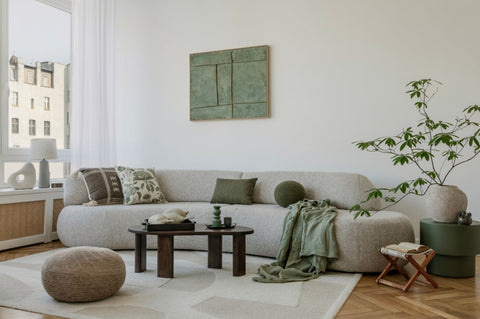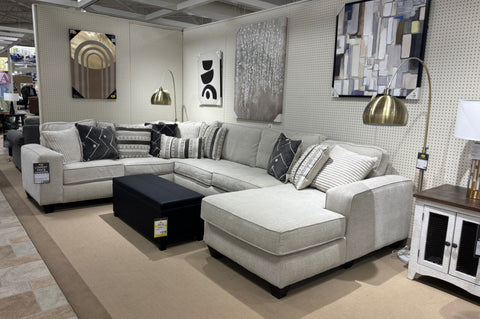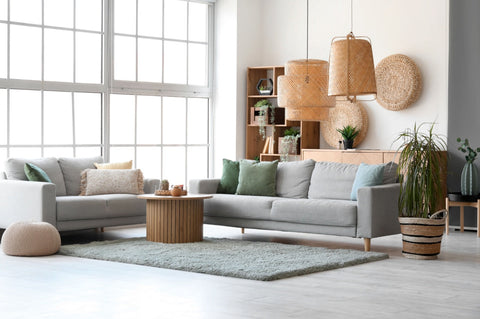A squeaky or wobbly accent table might seem like a small issue until it starts becoming part of your daily routine. Maybe you've got your coffee cup resting on it, and every time you sit down, the whole thing shifts slightly or lets out that nagging creak. Annoying, right? These sounds and movements don’t just disrupt the calm of your space, they also take away from the overall look and stability of your furniture.
Over time, even the nicest looking accent table can lose its steady balance. With everyday use, parts loosen up, floors shift, or base legs wear down unevenly. That doesn’t mean the table is no longer useful—it just means it’s time for some quick checks and basic fixes. The good news is that most of these problems are easy to address once you know where to look.
Identifying the Cause of Wobbles and Squeaks
Before adjusting legs or reaching for a screwdriver, it's best to figure out what's really happening with the table. Accent tables usually start acting up for common reasons, and identifying the exact trouble spot will save time and effort.
Here are a few common causes of wobbles and squeaks:
- Loose bolts or screws connecting the legs and supports
- Uneven floor surfaces, especially in older buildings or places with thick rugs
- Warped wood or general wear to one or more legs
- Friction between wooden or metal pieces, often caused by lack of proper spacing or padding
Put the table on a flat, hard surface and gently press each corner to check for balance. If it wobbles in one direction, one leg is probably shorter or weaker than the others. If you hear a squeak when moving the table or when pressure is applied, it may be coming from a specific joint or fastener.
Another method is to flip the table upside down and examine all visible joints, bolts, and screws. Look for parts that appear off-centre, crooked, or improperly attached. Bits of debris or dust caught in the joints can also cause light friction and squeaks.
Don't forget to inspect the floor itself. Sometimes the issue is not in the table but in an uneven surface. Lay a folded piece of cardboard or paper under the shortest leg and see if the table feels more secure.
Fixing Wobbly Accent Tables
Once you've figured out what’s behind the wobble, it's time to fix it. Most solutions don’t take long and often make the table feel sturdier right away.
Here’s a step-by-step approach to stabilizing your table:
1. Tighten all fasteners
Use a screwdriver or Allen key to secure every screw, bolt, or nut. Focus on the joints where legs meet the bottom of the table.
2. Level uneven legs
If one leg is notably shorter, add felt pads, rubber bases, or adjustable furniture levelers to balance it out.
3. Check for warped wood
If a part of the frame or leg has twisted slightly, place a cushion or wedge where needed to help distribute the weight evenly.
4. Add anti-slip pads or mats
These increase floor grip and prevent shifting, especially on hardwood or tile surfaces.
5. Balance weight correctly
Try not to place heavy items on one end of the table. Leaning decor and poorly distributed weight can change balance and cause stress on joints.
While applying fixes, periodically flip the table upright and test its balance by lightly pressing from different angles. Adjust slowly to avoid over-fixing and keep everything aligned.
A bit of time spent here means more peace every time you walk into the room. You’ll notice fewer trembles, less irritation, and longer-lasting use.
Silencing Squeaky Accent Tables
Now that the wobble is gone, it’s time to deal with those squeaks. These often come from materials rubbing together. Friction causes small noises that can drive you up the wall if the table is in a frequently used space.
Start by pinpointing where the sound is coming from. Move the table gently and listen closely. If the noise happens near a leg or support beam, check that joint for looseness. Tightening bolts and fasteners is usually the first thing to try. Cracked or stressed wood near those joints can also lead to squeaking and may need professional attention.
To reduce friction noises:
- Rub a bit of non-drip furniture wax between wood joints
- Spray a light silicone-based lubricant between metal connections
- Insert small felt or rubber washers between touchpoints that keep shifting
Be sure to clean any extra lubricant or wax afterward so it doesn’t touch flooring or make surfaces slick.
If the squeak shows up again after some time, take note of where it’s coming from. Recurring squeaks often mean deeper wear and it may be time to let a repair professional take a look.
Creative Solutions for Long-Term Table Stability
Once everything is steady and quiet again, the next step is making sure it stays that way. In places like Calgary where August days bring dry indoor conditions, small shifts in temperature and humidity can make table materials expand or shrink. Planning ahead keeps things functioning better for longer.
Try these added steps for long-term stability:
- Place a non-slip mat under the entire table
This keeps it from sliding and protects floor surfaces.
- Use furniture coasters under each leg
They help spread the weight and reduce pressure damage to floors.
- Keep your table away from direct sunlight and heating vents
Fluctuating heat can dry out glue and warp the wood.
- Add reinforcement
If the table is extra long or has slim legs, consider adding a small centre block underneath for extra support.
Think about how your table is used, too. A decorative table may stay in great shape for years, while ones used daily need more regular upkeep. If balance problems come back often or you see signs of wear despite your efforts, investing in a better-built piece might be the smarter route over time.
An experienced technician can also evaluate tricky repairs and restore stability when DIY options stop working.
Maintaining Your Accent Tables
Accent tables add both function and design to your space. Keeping them in good condition doesn’t take much. Just a few small habits can help them last longer and keep looking great.
Here are some quick table care tips:
1. Lightly wipe the surface each week
Use a soft, damp cloth to clear off dust and spills. Avoid using strong chemicals.
2. Inspect bolts and screws monthly
Feel along the edges and legs. If there’s even slight movement, give them a snug twist.
3. Shift your decorations
Switch locations of vases, books, or trays every so often. This spreads the weight more evenly and avoids dents or wear in just one place.
If you're rearranging furniture or moving into a new space, always test table balance on the new surface. Even tile edges or carpet seams can throw things off and cause annoying shifts.
With light, regular attention, accent tables often stay looking stylish for years before they need anything more serious.
Enjoying a Quieter, More Stable Space
Small adjustments turn frustrating furniture into something reliable again. Tightening bolts or adding protective feet might seem like small steps, but they make a noticeable difference without needing major changes. Whether your table is a décor highlight or a well-used piece near the couch, steady balance and quiet joints make your whole room feel calmer.
Most minor fixes are quick and cost very little but keep your furniture looking fresh and feeling solid. If you catch problems early, you avoid bigger issues down the line. Whether you're fixing a squeaky joint or evening out a leg, you're creating a space that invites comfort instead of distraction. Keeping your accent tables stable is one of those easy upgrades that make daily life smoother.
Enjoy a more stable and serene living environment with cared-for surfaces that enhance your décor. Discover our wide range of high-quality accent tables at Accents@Home to find the perfect piece for your space. Whether you're looking for sleek designs or something more robust, we offer options that effortlessly blend style and function in any room.




